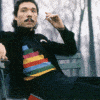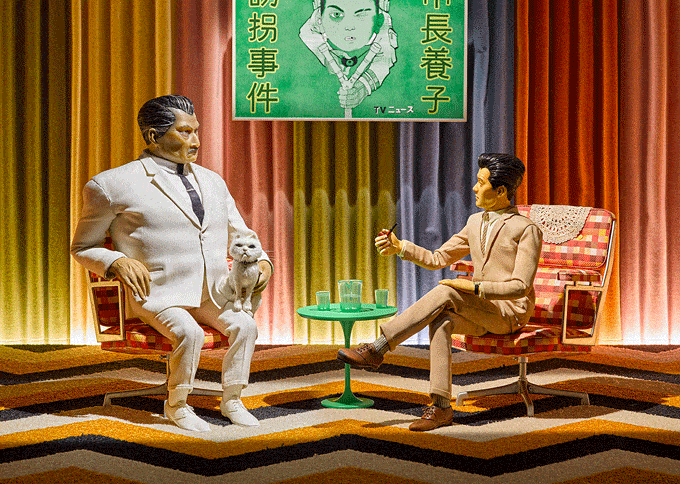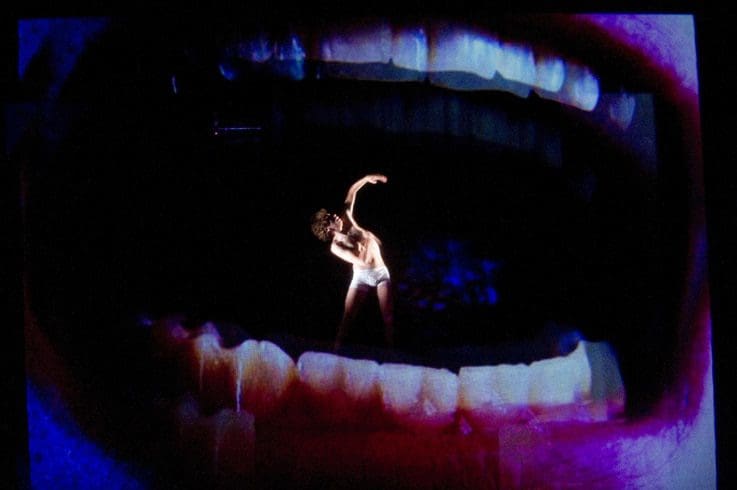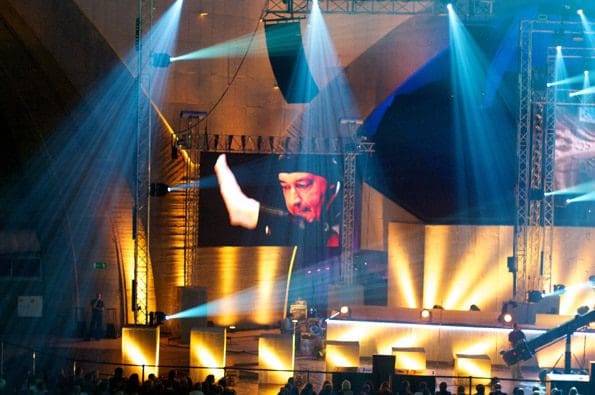words Paul Risker
Antonio Lopez 1970: Sex, Fashion & Disco, the third feature film from art historian, curator and filmmaker James Crump is a cinematic portrait of the most influential fashion illustrator of the 1970s.
Crump’s directorial debut Black White + Gray (2007) featured curator and collector Sam Wagstaff and artist Robert Mapplethorpe, whilst his sophomore feature Troublemakers: The Story Of Land Art (2015) looked to the artists behind the land art of the American Southwest of the 1960s and 1970s.
His latest film looks to the life and story of an artist responsible for transforming fashion art at a time when designers and their entourage became influential on the social scene, discovering new talent,among them Pat Cleveland, Grace Jones, Jerry Hall, Donna Jordan, Jane Forth and Jessica Lange. Chronicling his rise to fame in New York, before he moved to Paris to escape the restrictions on inclusivity and diversity, the film unpacks his relationship with Karl Lagerfeld, and the latter’s rivalry with Yves Saint Laurent.
In conversation with Flux, Crump discussed his feelings of the term ‘documentary’ and his attempt to create cinema on a metaphysical level. He also reflected on Lopez’s legacy and his enduring resonance, as well as his aspiration for transformation on both sides of the screen.
How do you perceive the role of documentary film in our contemporary world?
Well, I have my own problems with that word ‘documentary’ because I think in a way it conjures up so many anachronistic perceptions about that kind of filmmaking, in this particular moment. The projects I have chosen to take on so far have been challenging subjects, and I was almost trying to make a hologram; pulling something out of the ether that doesn’t necessarily exist because for instance, there’s not much footage of Antonio. When I am making a motion picture like this or for my other projects, I am not necessarily thinking of them as documentaries. I want my films to traffic in cinema, I want them to be able to stand alongside narrative features and docu-dramas, or animated shorts. I want them to be about excellence and I want them to be original, and I want them to be an entertainment too. So while all my films are historically accurate, I am not approaching it in a way that I am thinking: Oh, it is a documentary. To me when I think about documentaries, I think about people strapping a camera on their shoulder and going around recording subjects, and then going back to their studio and working for ten years on a project. But documentaries are very important and in spite of my problems I have with the phrase or the term, it is an incredible moment for this kind of filmmaking, whether you call it documentary or whatever.
As documentaries are now being shot with a cinematic aesthetic, borrowing stylistically from narrative filmmaking, it inevitably creates a contrast to traditional expectations of the term documentary. It evidences how the meaning of a word or a term can be in a state of flux.
I am putting obstacles in my way that are very challenging to overcome, which is to say like my first film about Sam Wagstaff and Robert Mapplethorpe (Black White + Grey), I am going for something that is metaphysical and holographic. It’s trying to do something with film that is not easy to do, by producing something that is not just some straight document. Breathing something metaphysical into the motion picture is such a challenge, and it’s something that is magical and rewarding when you find the right balance with all the various elements that go into the film. But when you are working towards it, it’s incredibly frustrating because you are going for something that’s not really there. The filmmakers I am most drawn to are the ones that seek those kinds of things in their motion pictures.
“Antonio didn’t record, he rendered” is an early quote in the film that describes the essence of what you are discussing. The essence of creativity is not to capture a perfect representation of reality, but to render that image, which as a filmmaker, you are seemingly in touch with.
Yeah, you’re exactly right and I agree. It’s attempting to draw out an innocence that is still resonating, which is on its last breath. It is a sense of a moment or period of a person’s life, of their contributions and I think that’s what Joan Buck means, that “he doesn’t record, he renders.” He’s going for something much deeper and he’s so talented, he’s such a great draftsman he could simply make the document, but he’s trying to do something else that doesn’t exist. It’s metaphysical and again there is a paranormality to it. There’s a gift that he has that no one else possesses, and people ask me who is Antonio’s equal today? He doesn’t have any equals today; there’s no successor to that character.
Why is this? Are we lacking creatively in the contemporary world where we are awaiting a revitalisation, or is it that brilliance can only be appreciated in its time, and should not be subject to our comparative tendencies?
Well I think these traits that he had, it was a fluidity, a synthesis. He wasn’t simply an illustrator, he was much more than that. He was an arbiter of style and he had this reach into culture and into the street, into aesthetics, music and new media. And his open mindedness and this fluidity is demonstrated physically in his person and in his self. But also spiritually, he had this ability to move in between various factions and obstacles, various personalities, genre and technology. He had this very singular ability that today because of specialisation, and where we are in this particular moment of late capitalism and with the profit motive, these have changed all of our lives. Antonio was doing it for a different reason, he wasn’t doing it to make money or necessarily for acclaim. He wanted to do something original and he was able to somehow engage, but also to employ this very unique human skill set that he had, and I think that’s what makes it difficult, and raises the bar really high for one to become a successor. So I don’t believe there is an equal today.
Antonio’s strength of presence creates a human appeal that echoes Alfred Hitchcock’s sentiments on our voyeuristic nature. Even if one has a lack of interest in fashion, the film shows how the human appeal can open up and make the subjects of not only fashion, but culture and the 1970s accessible through human interest.
Yeah, I absolutely agree with Hitchcock and with you. I think the characters I am drawn to are sometimes under song in history, but they are the ones that I have latched onto because they have drawn me into their lives and stories. Antonio is such a subject for me, and has certainly resonated for over twenty years, and what makes a beautiful successful narrative story is that human drama, eccentricity and singularity. And also that touch of humanity is very apparent in the storytelling about Antonio – his sense of love, open mindedness and inclusivity. He was advocating for inclusivity and diversity for some of the things we are talking about right now back in the mid 1960s, and it was because of some kind of almost clairvoyance, of being able to have a vision of what the future could possibly be like. It was utopian, but he still had that vision and that’s what makes him interesting enough, and lovable and appealing to swathes of people who may or may not like fashion, and may not like the 70s. It is that human element that draws us into him and he’s absolutely magnetic. And it’s that larger than life sense that he has that is still resonating somehow.
Interviewing filmmaker Christoph Behl he remarked to me: “You are evolving, and after the film, you are not the same person as you were before.” Do you perceive there to be a transformative aspect to the creative process, and should the experience of watching a film offer the audience a transformative experience?
Oh to me that’s very important, and with all of my films I am seeking to create an immersive transformative experience for the viewer. For me certainly, all of the projects I have been involved with have been transformative. With the intensity that is required to make a film about Antonio or about Sam Wagstaff, you can never be the same after you finish the film. It’s inevitable that you will be changed and you will see the world differently after you come out of the editing and the production. Also, you can begin to experience it with other people, especially if you are experiencing it in these dark cinematic spaces. So I would say yes, it’s absolutely transformative and for me that’s what I am seeking too, in terms of what I want to create for the viewer.
Antonio Lopez 1970: Fashion, Sex and Disco is released theatrically and is available On Demand Friday 6 April 2018 courtesy of Dogwoof.
For information on theatrical screenings visit: https://dogwoof.com/antoniolopez/#screenings






















